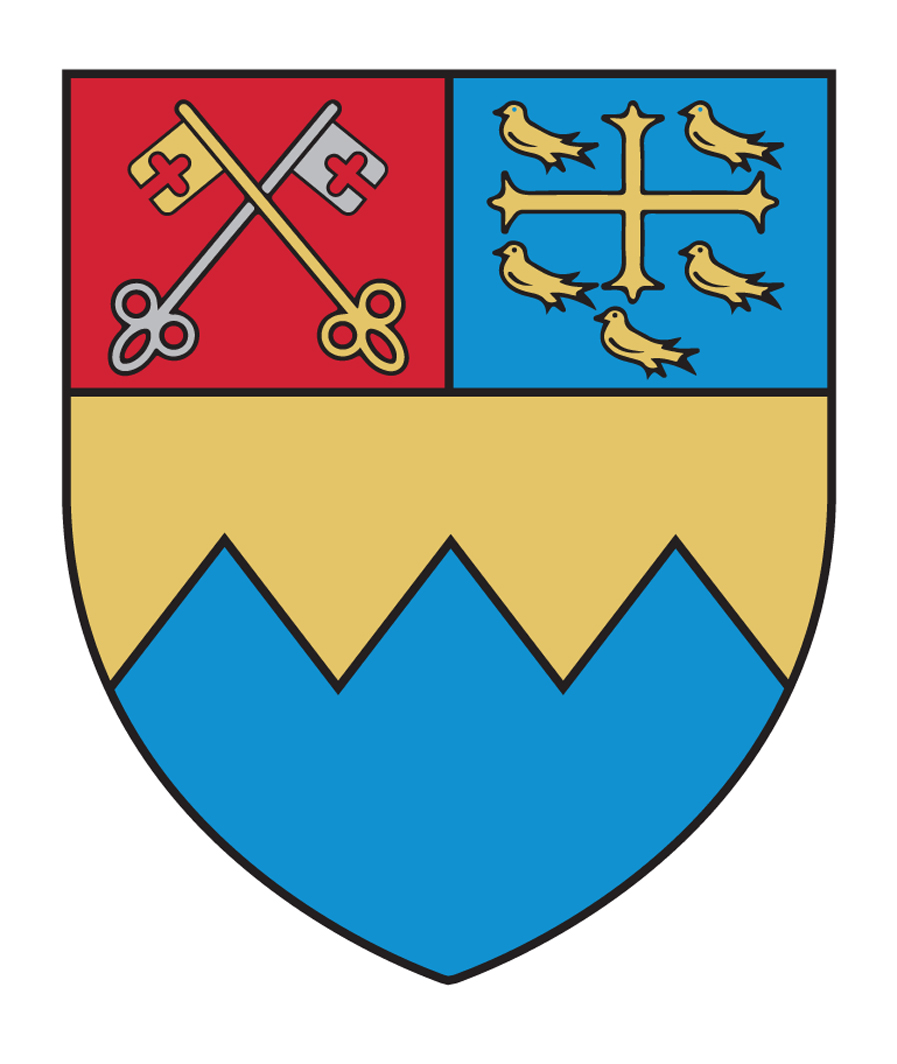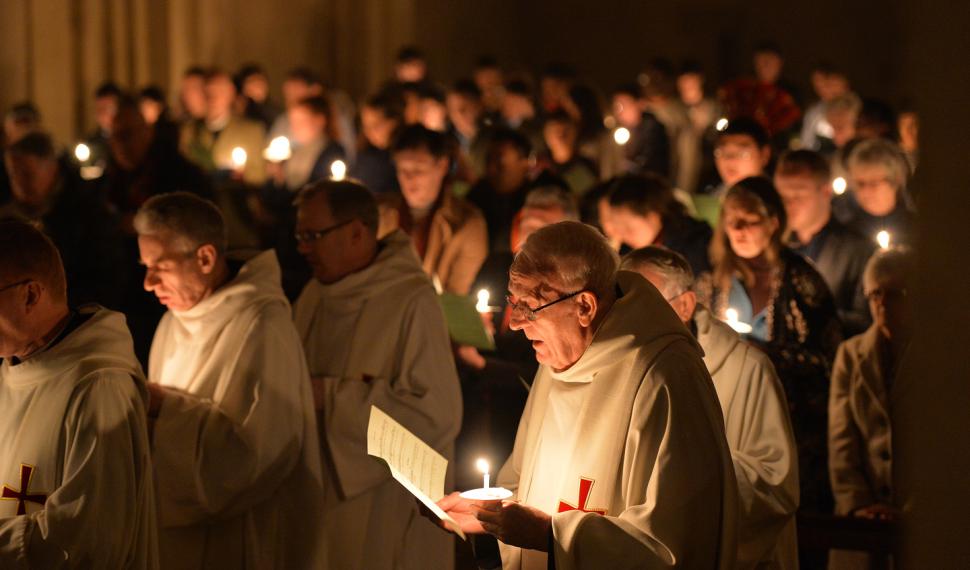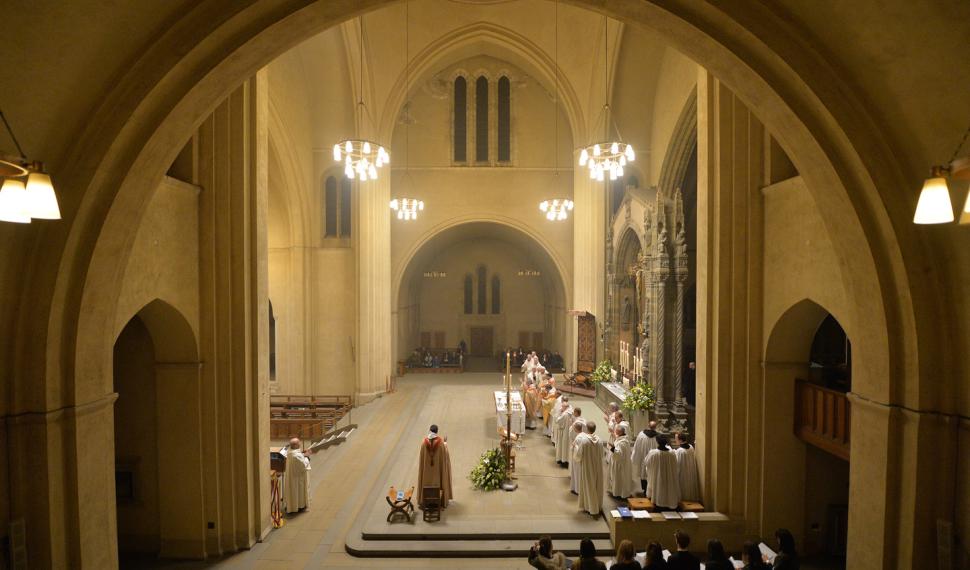
There are three main parts to the Easter Vigil, which the Church has always revered as the “Mother of all vigils”:
- The Liturgy of the Word – comprising the Vigil readings from the Old Testament and then the New Testament readings for the Eucharist
- The “Baptismal Liturgy” – or, where Baptism is not celebrated, the blessing of the Font and Renewal of Baptismal Promises
- The Eucharistic liturgy
But before these main elements, there are two ancient rites – the blessing of the new fire and procession into the Church, and then the singing of the Exsultet.
The Exsultet – named after its first word “Exsultet” – “Rejoice!” – is an ancient hymn of praise. It seems to have its origins in the 4th and 5th centuries in the churches of Spain, Italy and France, and was only slowly adopted into the liturgy of the Church of Rome. The text we use today seems to have been written at some time between the 5th and 7th centuries. Sometimes known as the Laus Cerei – the “praise for the candle” – it is a long prayer of blessing, most properly sung by a deacon. In the modern Roman Rite, it has become known as the Praeconium Paschale – the “Easter proclamation”.
After an initial few sentences exhorting all Creation and Mother Church to raise a song of praise, it takes the form of a Preface, such as is used in the Eucharistic liturgy. The long sung prayer recounts the wonders of the saving work of Christ, whose new and risen light, shining in the darkness, the Paschal Candle itself represents. Again and again, the prayer tells of Christ’s work, which comes to completion on this night of Easter, drawing much of its symbolism from the Old Testament. For “this is the night” when Christ paid Adam’s debt to the eternal Father with his own blood. This is the night of the Passover, when Christ, the true Lamb, was slain to save Israel from slavery. This is the night when Christ, the pillar of fire, led his people through the Red Sea and the desert from slavery to freedom. This is the night when Adam’s fault won for the world so great a redeemer, when God gave his own Son to ransom a slave.
The last part of the prayer takes the form of a prayer of blessing and consecration; the Paschal Candle, a fire divided but undimmed, is made a solemn offering to God. In the very last phrases, the deacon prays that Christ, the true Morning Star, will find the candle – the flame of faith – still burning, that same Christ whose risen light shines peacefully on all humanity.
The Exsultet is thus a theological introduction to the whole of the Easter Vigil, a sort of “overture” to the drama of salvation which culminates in Christ’s resurrection. The Paschal Candle, from which all the lights in the Church are lit, and which remains lit through Eastertide, symbolises the light of the Risen Christ. But perhaps most tellingly, it is bathed in that light that we hear the readings at the Vigil; it is by that new light of Christ that we interpret all those Old and New Testament readings – from the narrative of Creation to the finding of the Empty Tomb.
May this flame be found still burning by the Morning Star:
the one Morning Star who never sets, Christ your Son,
who, coming back from death's domain, has shed his peaceful light on humanity,
and lives and reigns for ever and ever. Amen.




